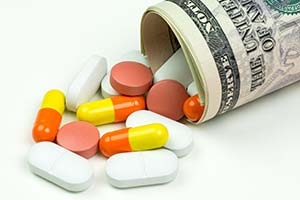The price of TB antibiotic medicine – rifapentine, was cut down by 66% by its manufacturer Sanofi. When combined with another antibiotic (isoniazid), rifapentine can prevent tuberculosis (TB) disease. This good news was broadcast at the Union World Conference on Lung Health.
Talks to lower the price from US$45 to US$15 for a three-month course took more than a year to complete and involved Sanofi, Unitaid and the Global Fund to Fight Aids, Tuberculosis, and Malaria, in collaboration with the Stop TB Partnership’s Global Drug Facility and the United States PEPFAR initiative.
Advocates have been insisting on price lower the price of rifapentine medicine since the scientific effect of this medicine was proven in peer-reviewed journals. Three months of treatment with rifapentine plus isoniazid was shown to be just as effective as and less toxic than one year of therapy with isoniazid alone (the previous standard). The reduction in treatment time alone provides an obvious improvement.
The World Health Organisation (WHO) reviewed its guidelines for preventing TB disease. The guidelines now include three months of rifapentine and isoniazid taken weekly for people living in countries with a high TB burden. This routine is known as 3HP.
The WHO recommends that anyone living with HIV and those living in the same household as a person with TB disease should receive TB preventive therapy. The theme of 2019’s World AIDS Day was “Ending the HIV/AIDS epidemic: Communities make the difference”. Reaching this goal requires that preventive treatment programs engage with communities to develop, refine and bring to scale interventions designed to meet the needs of people with and vulnerable to HIV and TB.
Importantly, the 3HP regimen can be administered along with dolutegravir, a better antiretroviral drug that is now being provided in South Africa and globally. A combination is an effective tool for keeping vulnerable people as healthy as possible.
All prevention programmes must begin by finding people who need TB preventive therapy. People living with HIV can be identified through HIV clinics. Contacts of people with TB disease can be identified by investigating affected households. People must always be screened for TB before starting TB preventive therapy.
In 2018, the member states of the United Nations committed to expanding the number of people receiving preventive treatment to at least 30 million by 2022. But the world is nowhere close to meeting that goal. It will take a lot of work to achieve these targets.
As the price of Sanofi’s rifapentine product Priftin cut down, now it can be more accessible to the public. If Priftin has not been approved for use in a country that needs this treatment, national TB programmes can work with the WHO and local regulatory authorities to process waivers.
Treatment for latent TB infection has been available since the 1950s, yet very few people who could benefit from TB preventive therapy are taking it. This price break making a shorter and equally effective treatment more affordable and perfect opportunity to make a dent in these numbers.

